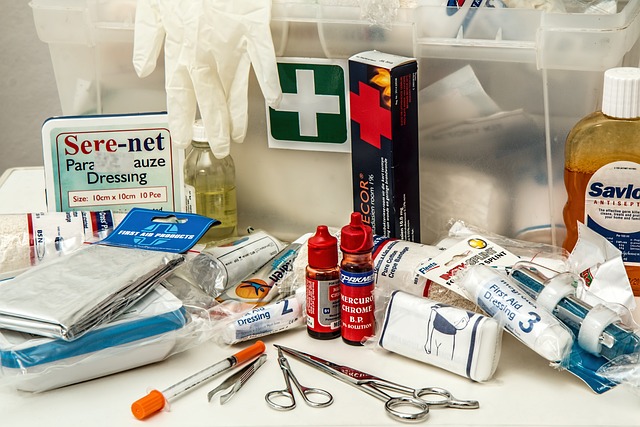 First Aid Kits for Child Care Providers: Essentials and How to Use Them
First Aid Kits for Child Care Providers: Essentials and How to Use Them
Child care providers play a crucial role in maintaining the #safety and well-being of the children under their care. Accidents and minor injuries are inevitable in child care settings, making a well-equipped first aid kit an essential tool. In this comprehensive guide, we'll explore the necessary items for a child care first aid kit and provide step-by-step instructions on how to use them effectively.
Essential Items for a Child Care First Aid Kit:
- Adhesive Bandages (Assorted Sizes) and Tape:
- Small and colorful bandages can be particularly appealing to children.
- Medical tape for securing bandages in place
- Antiseptic Solution or Antiseptic Wipes:
- Hydrogen peroxide or antiseptic wipes for cleaning wounds.
- Child-friendly antiseptic solutions can make the process less intimidating.
- Cold Pack:
- Use for treating bumps, bruises, and minor swelling.
- Cotton-Tipped Swabs:
- Gentle swabs for applying antiseptic solution to wounds.
- Disposable Powder-Free, Latex-Free Gloves:
- Ensure a hygienic response to injuries while protecting caregivers.
- Eye Patch:
- Useful for covering and protecting injured eyes.
- Fever-Reducing Medications:
- Acetaminophen or ibuprofen for reducing fever, only for children with a #health care provider's order and parental consent.
- Flexible Roller Gauze:
- Versatile for securing dressings and providing support.
- Liquid Hand Soap and/or Handwashing Gels:
- Maintain hygiene when treating wounds.
- Mouthpiece for CPR:
- Obtain from your local Red Cross for administering cardiopulmonary resuscitation.
- Pen/Pencil and Note Pad:
- Essential for documenting incidents, treatments, and communication.
- Plastic Bags:
- Dispose of contaminated materials such as bandages or gloves.
- Safety Pins:
- Useful for securing bandages or clothing.
- Sanitary Pads (Individually Wrapped):
- Effective for controlling bleeding in case of injuries.
- Small Scissors:
- For cutting tape, gauze, or clothing.
- Sterile Eyewash:
- Essential for flushing eyes in case of foreign body contact.
- Sterile Gauze Pads (Various Sizes):
- For covering wounds and promoting healing.
- Thermometer (Digital or Tympanic):
- Ensure it does not contain glass or mercury.
- Triangular Bandages:
- Versatile for creating slings or securing dressings.
- Tweezers:
- Precise tools for removing splinters or foreign objects.
- Water (2 L of Sterile Water):
- Use for cleaning wounds or eyes.
Using the Child Care First Aid Kit:
Now that you've assembled a comprehensive first aid kit, it's crucial to know how to use its contents effectively. Follow these step-by-step instructions:
- Assess the Situation:
- Quickly assess the severity of the injury or illness.
- Ensure the safety of the child and those around.
- Call for Help:
- For serious injuries or illnesses, call #emergency services immediately.
- Protect Yourself:
- Put on disposable gloves to protect against bodily fluids.
- Comfort and Reassure:
- Keep the child calm and reassured during the process.
- Clean and Disinfect:
- Use an antiseptic solution or wipes to clean the wound gently.
- Reassure the child during this process.
- Apply Bandages and Dressings:
- Use colorful and child-friendly bandages.
- Secure dressings with medical tape or flexible roller gauze.
- Administer Medications (If Appropriate):
- Only administer medications with a health care provider's order and parental consent.
- Document the administration.
- Handle Eye Injuries:
- Use the sterile eyewash to flush the eyes in case of foreign body contact.
- Apply an eye patch if needed.
- Treat Fever:
- Administer fever-reducing medications according to the health care provider's instructions.
- Address Bleeding:
- Use sanitary pads to control bleeding, applying pressure if necessary.
- Ensure the child is comfortable and reassured.
- Comfort and Reassure:
- Maintain a comforting presence throughout the process.
- Use child-friendly #language to explain procedures.
Maintenance and Regular Check-ups:
Regularly maintaining and checking your child care first aid kit is essential for optimal readiness. Here's how:
- Regular Inspections:
- Conduct routine checks to ensure all items are in good condition.
- Check expiration dates on medications and sterile supplies.
- Restocking:
- Promptly replace any used or expired items.
- Update the kit based on changing needs or activities.
- Training:
- Stay updated on first aid and CPR techniques by attending training courses.
- Ensure all staff members are familiar with the location of the first aid kit and understand its basic use.
Get your First Aid & CPR Training
ChildCareEd offers the First Aid & CPR training in two different formats to support all providers and their busy schedules.
- First Aid & CPR Blended (4 hours)
- The course is divided into two parts – an online portion and an in-person skills session.
- Online Portion: Students complete the first part of the course at www.childcareed.com through our online platform.
- In-Person Skills Session: After completing the online portion, students need to attend an in-person skills and drills session for practical hands-on training assessment.
- First Aid & CPR In-Person (4 hours)
- This course is conducted fully in-person by a certified first aid and #cpr instructor.
In-person training is conducted at H&H Corporate Office Suite 839 Quince Orchard Blvd Ste D, Gaithersburg, MD 20878.
To register for your First Aid & CPR training with ChildCareEd visit www.childcareed.com and click on Instructor Led. All of our upcoming courses are listed on our training calander.
Child care providers are entrusted with the safety and well-being of the children in their care. A well-equipped first aid kit, combined with knowledge of its contents and effective usage, is a crucial resource in handling minor injuries and emergencies. By assembling and maintaining a comprehensive child care first aid kit, providers contribute to creating a secure and nurturing environment for the children they serve.